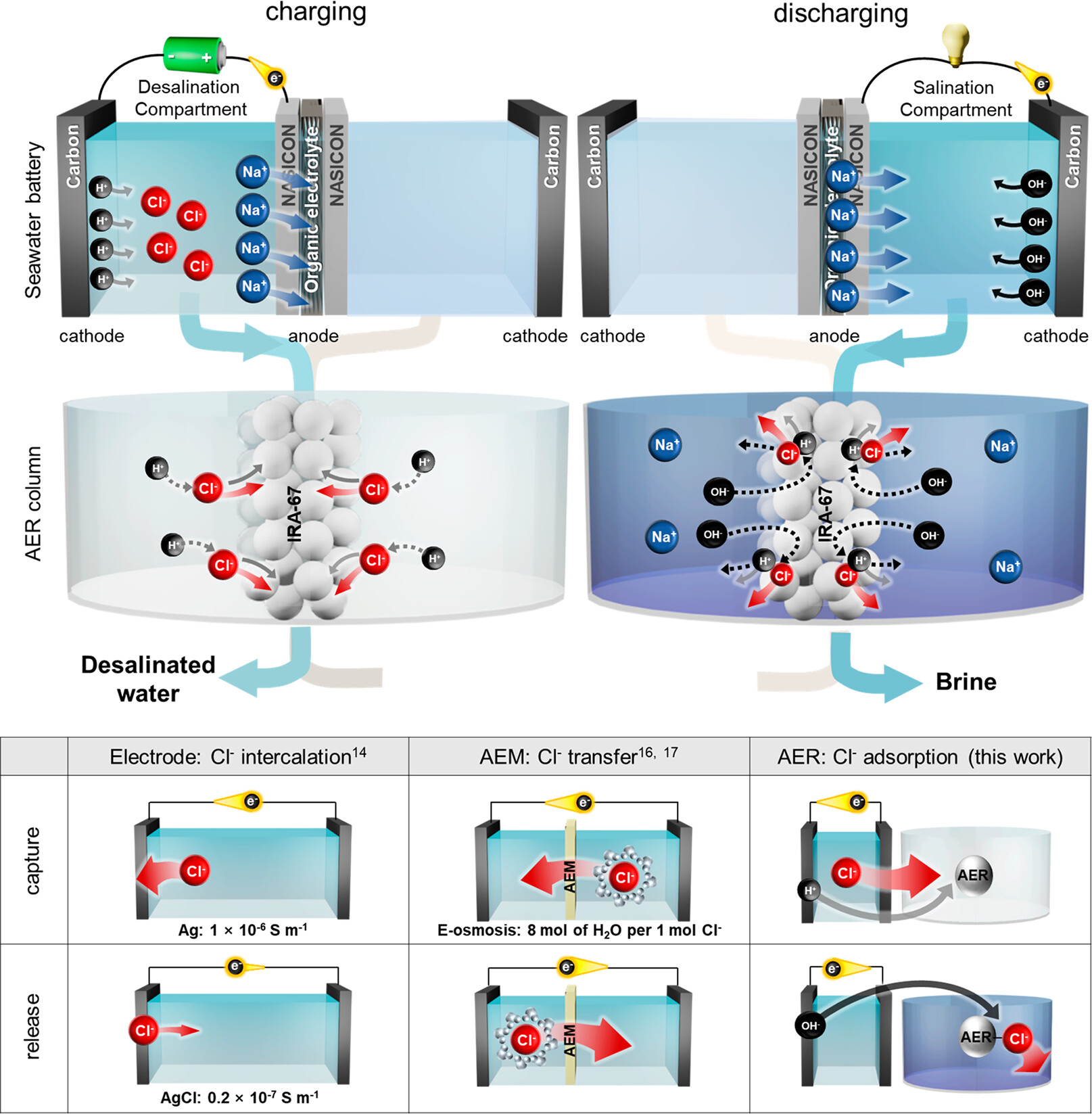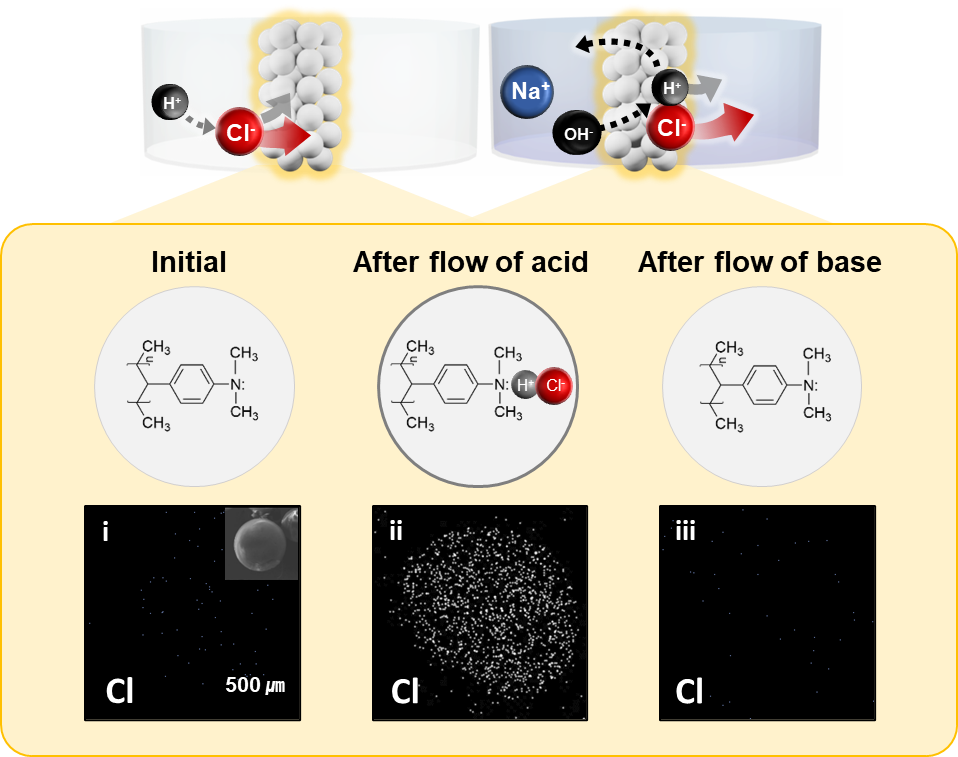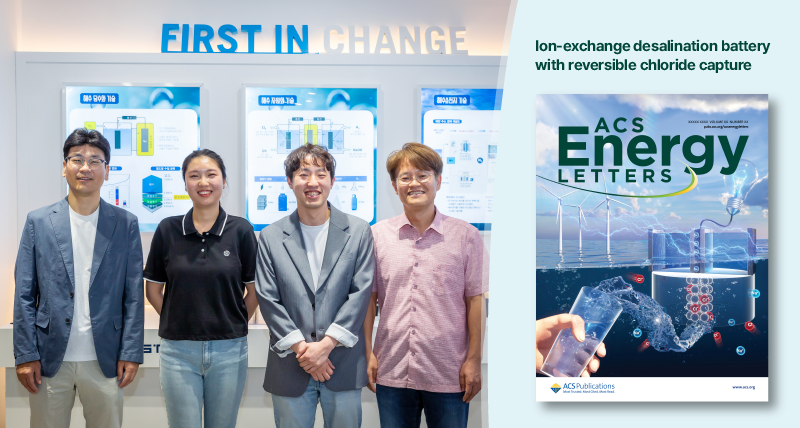The need for seawater desalination has intensified due to the escalating water shortages caused by climate change. A research team, affiliated with UNIST has developed innovative technology that simultaneously facilitates renewable energy storage and seawater desalination, addressing the CO2 emissions typically associated with traditional desalination processes.
Led by Professor Kwangjin An and Professor Youngsik Kim in the School of Energy and Chemical Engineering at UNIST, the team has demonstrated an ion-exchange desalination battery (IEDB), comprising an anion-exchange resin (AER) and a seawater battery (SWB) for simultaneous energy storage and seawater desalination. According to the research team, this work proposes a novel approach to enhancing the reversibility of Cl– capture, a longstanding challenge in desalination battery.

Figure 1. Schematic of the Proposed IEDB (Top) and Comparison of Cl–-Capture Methods (Bottom)
The research successfully achieved the desalination of 375 mL of seawater to meet industrial water standards. Previous desalination batteries struggled with regeneration, retaining approximately 60% of chlorine in the electrodes upon discharge. However, this new freshwater battery effectively removes over 99% of chlorine, showcasing its exceptional regenerative capacity.
During the discharge process, sodium collected in the cathode is released from the freshwater battery while chlorine captured in the AER is also discharged. This mechanism allows for the regeneration of the ion-exchange resin without requiring additional energy, utilizing hydroxide ions (OH-) generated at the anode.

Figure 2. Mechanism by which Cl– exchange occurs in the AER column: (a) Schematic illustrating the anion exchange process in the AER, with insets showing Cl EDS mapping images of the AER before (left), after the flow of HClaq (0.6 M; middle) and after the flow of NaOH (0.6 M) dissolved in 0.6 M NaClaq (right).
The technology performed effectively in real seawater environments, reducing the salinity of seawater from approximately 3.9 wt% to about 0.7 wt%, making it suitable for industrial use.
Professor An noted, “This technology can lower facility costs by integrating energy storage batteries and seawater desalination systems into a single unit, contributing to sustainable desalination powered by renewable energy sources.”
Professor Kim emphasized the goal of accelerating the commercialization of this freshwater battery technology for seawater desalination as a next-generation solution.
The findings of this research were featured as a supplementary cover image and published in ACS Energy Letters on May 16, 2024. The study has been conducted with support from the Korea Research Foundation, the Ministry of Trade, Industry and Energy (MOTIE), and the Circle Foundation.
Journal Reference
Seongwoo Jeong, Yoonjeong Jo, Namhyeok Kim, et al., “Ion-Exchange Desalination Battery with Reversible Chloride Capture,” ACS Energy Letters, (2024).















